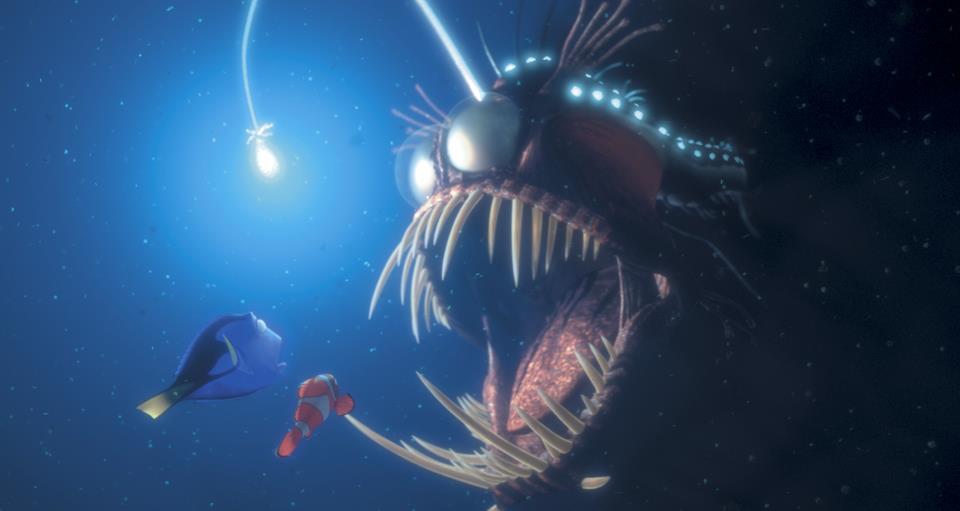Among the many mesmerizing creatures featured in the animated film "Finding Nemo," the angler fish stands out as one of the most intriguing characters. Its appearance in the darkest depths of the ocean has captured the imagination of audiences worldwide. While the angler fish in the movie is fictional, the real-life version of this deep-sea predator is just as fascinating, if not more so.
The angler fish is not only a star in the world of marine biology but also an inspiration for filmmakers who aim to depict the mysterious beauty of the ocean. Its unique features and hunting techniques have made it an object of study for scientists and a subject of fascination for nature enthusiasts.
Through this article, we will delve into the world of the angler fish, exploring its biology, behavior, and ecological significance. Whether you're a fan of "Finding Nemo" or simply interested in marine life, this article will provide a comprehensive understanding of one of the ocean's most extraordinary creatures.
Read also:Izabella Scorupco Spouse A Comprehensive Look At Her Personal Life And Relationships
Table of Contents
- Biography of the Angler Fish
- Habitat and Distribution
- Physical Characteristics
- Behavior and Hunting Techniques
- Reproduction
- Ecological Role
- Threats to Angler Fish
- Conservation Efforts
- Scientific Studies and Discoveries
- Conclusion
Biography of the Angler Fish
Key Facts About the Angler Fish
The angler fish is a group of fish belonging to the order Lophiiformes, which includes over 200 species. These creatures are primarily found in the deep sea, often at depths exceeding 1,000 meters. The most iconic feature of the angler fish is its bioluminescent lure, which it uses to attract prey in the dark abyssal zones of the ocean.
Below is a summary of key facts about the angler fish:
| Scientific Name | Lophiiformes |
|---|---|
| Common Name | Angler Fish |
| Habitat | Deep sea |
| Diet | Other fish, crustaceans, and squid |
| Size | Varies by species; some can grow up to 1.8 meters |
The angler fish's unique adaptations allow it to thrive in one of the most inhospitable environments on Earth. Its ability to survive in extreme conditions has made it a subject of interest for researchers studying marine biology and evolutionary biology.
Habitat and Distribution
The angler fish is predominantly found in the deep sea, where sunlight does not penetrate. This environment is characterized by immense pressure, near-freezing temperatures, and complete darkness. Despite these harsh conditions, the angler fish has thrived, thanks to its remarkable adaptations.
Global Distribution
Angler fish are distributed across the world's oceans, with the highest concentrations found in the Atlantic and Pacific Oceans. They inhabit both pelagic (open ocean) and benthic (seafloor) zones, depending on the species. Some species are even known to venture into shallower waters during certain times of the year.
According to the National Oceanic and Atmospheric Administration (NOAA), the angler fish plays a crucial role in maintaining the balance of deep-sea ecosystems. Its presence helps regulate the populations of other marine species, making it an essential part of the food web.
Read also:Riley Mae Lewis Understanding The Phenomenon Behind Her Fans
Physical Characteristics
The physical characteristics of the angler fish are as unique as its habitat. These creatures are often described as grotesque due to their large heads, sharp teeth, and bioluminescent lure. However, each feature serves a specific purpose that aids in their survival.
Unique Features
- Bioluminescent Lure: The most distinctive feature of the angler fish is its esca, a bioluminescent organ located on a stalk extending from its head. This lure emits light to attract prey in the darkness of the deep sea.
- Large Mouth and Teeth: The angler fish has a massive mouth filled with sharp, translucent teeth. These teeth are designed to trap and hold prey securely.
- Flexible Body: The angler fish's body is highly flexible, allowing it to swallow prey much larger than itself. This adaptation is crucial for survival in an environment where food is scarce.
These physical traits make the angler fish one of the most well-adapted predators in the deep sea. Its ability to lure and capture prey efficiently ensures its survival in one of the harshest environments on the planet.
Behavior and Hunting Techniques
The behavior of the angler fish is as fascinating as its physical appearance. These creatures are solitary hunters, relying on their bioluminescent lure to attract prey. Their hunting techniques are a testament to their intelligence and adaptability.
Hunting Process
The angler fish uses its esca to mimic the movements of small prey, luring larger creatures within striking distance. Once the prey is close enough, the angler fish quickly snaps its jaws shut, trapping the unsuspecting victim. This method of hunting is highly effective in the deep sea, where visibility is limited.
Studies conducted by marine biologists have revealed that some species of angler fish can emit different wavelengths of light from their esca, depending on the type of prey they are targeting. This ability to adjust their lure's properties demonstrates the sophistication of their hunting techniques.
Reproduction
Reproduction in angler fish is a remarkable process that involves extreme adaptations. Male angler fish are significantly smaller than females and often attach themselves to the female's body, fusing with her circulatory system. This parasitic relationship ensures the survival of the species in an environment where encounters between males and females are rare.
Parasitic Males
In some species, the male angler fish becomes permanently attached to the female, losing its eyes and other organs over time. This adaptation allows the female to provide nutrients to the male, ensuring successful reproduction. The male's sole purpose is to fertilize the female's eggs, which are released into the water column.
This unique reproductive strategy highlights the angler fish's ability to adapt to its challenging environment. It is a testament to the resilience and ingenuity of nature in the face of adversity.
Ecological Role
The angler fish plays a vital role in the deep-sea ecosystem. As apex predators, they help regulate the populations of other marine species, maintaining the balance of the food web. Their presence also contributes to the nutrient cycle, as their waste products and remains provide essential nutrients for other organisms.
Impact on the Ecosystem
According to research published in the journal "Marine Ecology," the angler fish's role in the deep-sea ecosystem is crucial for maintaining biodiversity. Their hunting activities ensure that no single species dominates the environment, promoting a healthy and balanced ecosystem.
Furthermore, the angler fish's bioluminescent abilities have inspired scientists to develop new technologies for deep-sea exploration. By studying their light-emitting organs, researchers hope to create more efficient lighting systems for underwater research vessels.
Threats to Angler Fish
Despite their adaptability, angler fish face several threats in the modern world. Climate change, overfishing, and habitat destruction are among the most significant challenges they must overcome to survive.
Climate Change
Rising ocean temperatures and increased acidity levels pose a significant threat to deep-sea ecosystems, including the angler fish. These changes can disrupt the delicate balance of the food web, affecting the availability of prey and the angler fish's ability to reproduce.
Research conducted by the Intergovernmental Panel on Climate Change (IPCC) suggests that the deep sea is not immune to the effects of global warming. As temperatures continue to rise, the survival of species like the angler fish becomes increasingly uncertain.
Conservation Efforts
Conservationists are working tirelessly to protect the angler fish and its habitat. Efforts include the establishment of marine protected areas, the implementation of sustainable fishing practices, and the promotion of public awareness about the importance of deep-sea ecosystems.
Marine Protected Areas
Marine protected areas (MPAs) are designated zones where human activities such as fishing and mining are restricted or prohibited. These areas provide a safe haven for species like the angler fish, allowing them to thrive without the threat of human interference.
Organizations such as the World Wildlife Fund (WWF) and the Marine Conservation Institute are leading the charge in creating and maintaining MPAs around the world. Their efforts are crucial for the long-term survival of deep-sea species.
Scientific Studies and Discoveries
Scientific research on the angler fish has led to numerous discoveries that have expanded our understanding of deep-sea ecosystems. From bioluminescence to parasitic reproduction, each discovery has shed light on the incredible adaptations of these creatures.
Bioluminescence Research
One of the most exciting areas of research involves the study of bioluminescence in angler fish. Scientists are eager to understand how these creatures produce light and how this ability can be applied to various fields, including medicine and technology.
Recent breakthroughs in bioluminescence research have the potential to revolutionize the way we approach deep-sea exploration and medical imaging. By mimicking the processes used by angler fish, researchers hope to develop new tools and techniques that will benefit humanity in countless ways.
Conclusion
The angler fish is a remarkable creature that has captivated the imaginations of scientists and nature enthusiasts alike. From its unique adaptations to its crucial role in the deep-sea ecosystem, the angler fish is a testament to the wonders of the natural world.
In conclusion, the angler fish's journey from the depths of the ocean to the silver screen in "Finding Nemo" has highlighted its importance in both scientific and cultural contexts. As we continue to learn more about these fascinating creatures, it is essential that we take steps to protect them and their habitat for future generations.
We invite you to share your thoughts and questions about the angler fish in the comments section below. Additionally, we encourage you to explore other articles on our website that delve into the mysteries of the deep sea. Together, we can celebrate and preserve the beauty of our planet's oceans.

